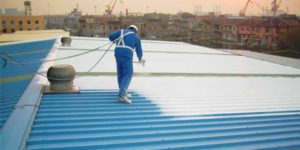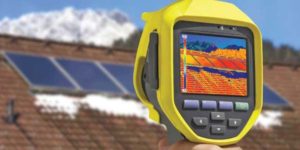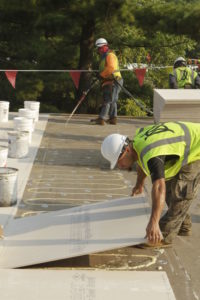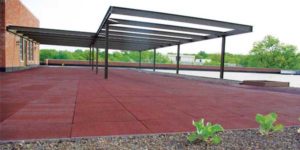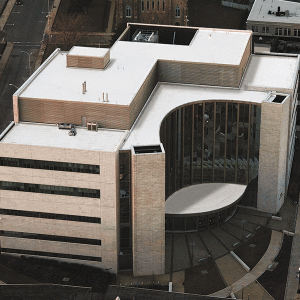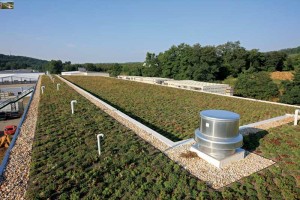Blue-roof implementation is on the rise in the United States and, indeed, around the world. First conceived in 2008, these ROOF assemblies have proved to be an emerging technology that changes the game in densely populated, urban areas like San Francisco, Philadelphia, and New York.
+ Read More
|
Reroofing and roof maintenance are seldom as simple as just applying a new layer of roofing. Indeed, they can often require selective demolition, roof deck repair and penetrations, insulation, new rooftop equipment, flashings, and repair and extension of other existing work.
+ Read More
|
What are the differences between paints and roof coatings, and what are liquid-applied membranes? Which material is ideal when an existing roof is not in a leak-free condition?
+ Read More
|
All roofs eventually leak—it is just a matter of when and where. Nevertheless, the hope is that new roofing systems do not leak right from the start. It is critical to verify the watertightness of roofing, especially if it is to be covered with ballast or a vegetated roof...
+ Read More
|
When designing a roofing assembly, many factors need to be considered. Performance attributes, product quality, aesthetics, price, and quantity must all be carefully examined. One key product often overlooked during this process is the cover board.
+ Read More
|
From a design standpoint, there are many different criteria, situations, and owner temperaments capable of affecting the outcome of a roofing installation. Roofing contractors have unique insight into the real-world factors design professionals should consider in order to make the installation as smooth and hassle-free as possible.
+ Read More
|
In June, a 5000-seat concert venue joined the attractions of Coney Island in Brooklyn, New York, as part of Riegelmann Boardwalk’s new Seaside Park and Community Arts Center. The Ford Amphitheater, a $53-million project, relied in part on its eyecatching roofing to achieve project goals.
+ Read More
|
With New York City’s 80x50 initiative to reduce greenhouse gas (GHG) emissions 80 percent by 2050, the stakes are high for the city to adopt progressively more stringent energy codes.
+ Read More
|
Building owners, commercial roof specifiers, architects, and contractors have some decisions to make when it comes to the material they should use to repair or replace a low-slope roof. Three popular choices include: coating over the existing roof; thermoplastic polyolefin (TPO) recover; or TPO replacement.
+ Read More
|
Highly reflective roofs, or ‘cool roofs,’ have been used throughout the country as an urban heat island reduction strategy, and as an energy saving measure for many years. The implementation began in warm climates such as California, Texas, and Florida.
+ Read More
|
|
|





